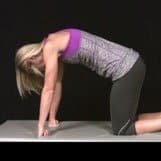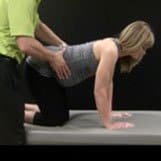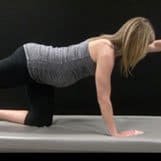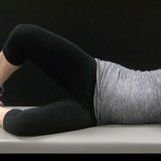4 Tools for Pregnancy-Related LBP
A new study from Anesthesia: Essays & Research concluded that up to 80% of pregnant women suffer from low back pain. Of those, one in three lost sleep and nearly twice as many limited their physical activity due to pain. (1) To make matters worse, a history of lower back pain doubles the risk of developing pregnancy-related low back pain.
Fortunately, almost 75% of women undergoing chiropractic management report significant pain reduction and clinically significant improvements in disability. (2,3) Check out the following synopsis of four evidence-based tools to help manage pregnancy-related LBP.
1. Manipulation
The goal of manual therapy is to restore normal joint mobility and reduce muscle tension. (4) Manual therapy, including chiropractic manipulation, has shown medium to large benefit for the management of pregnancy-related low back pain. (3,5,6)
Almost 75% of women undergoing chiropractic manipulation report significant pain reduction and clinically meaningful improvements in disability. (2,3) Additionally, nearly 4 in 5 women undergoing manual therapy report reduced pregnancy symptoms; i.e., heartburn, nausea, vomiting, dizziness, headache, insomnia, neck pain, hyperosmia (enhanced ability to perceive odors) and hypersalivation. (7) Women who seek chiropractic care throughout pregnancy may have an added benefit of shorter labor times. (8,9)
Unfortunately, 40% of (untreated) women who experience pregnancy-related LBP continue to suffer six months post-partum, and 20% report pain three years later. (10) However, a study by Schwerla et al. shows that, like pregnancy-related LBP, postpartum LBP also responds to spinal manipulation- approximately 10 times better than watchful waiting: (11)
“Spinal manipulation applied 4 times led to clinically relevant positive changes in pain intensity and functional disability in women with postpartum LBP. Pain intensity decreased in the manipulation group from 7.3 to 2.0 and in the control group (no treatment) from 7.0 to 6.5.” (11)
2. Exercise
Current physical activity guidelines suggest that healthy women may begin or continue moderate-intensity aerobic exercise for at least 150 minutes per week. (12,13) Women should not begin vigorous exercise during pregnancy.
Therapeutic exercise has been shown to significantly reduce pregnancy-related low back pain. (14,15) Specific exercises include pelvic tilts, knee to chest stretches, sciatic nerve floss, hamstring stretches, and Kegel exercises. (15,16) Stability exercises should target the gluteus maximus, gluteus medius, quadratus lumborum, abdominal wall, and intrinsic spine muscles in quadruped or side-lying positions. (4,17) We’ve included a few considerations:
3. Modalities?
Here’s an excerpt from the ChiroUp condition protocol, Pregnancy-Related LBP, that addresses employing physiotherapy modalities during pregnancy:
“The use of continuous or pulsed ultrasound is contraindicated over the low back, abdomen, and uterus during pregnancy, as potentially teratogenic sound waves may pass through amniotic fluid. (18) Clinicians should avoid most forms of electrical stimulation over the low back, pelvis, or abdomen during pregnancy. (18) Unwanted uterine contractions are the primary risk associated with e-stim. (19-22) The effect of electrical current on a developing fetus is uncertain, and clinicians should use extra caution when considering the potential risk vs. benefit for application to distant sites. (18) The use of low-level laser therapy is contraindicated during pregnancy due to possible light-induced effects on fetal growth and development. (18,25)
Clinicians may, however, consider the use of a sensory-level TENS unit to sites remote from the uterus and abdomen. TENS has been shown to be safe and beneficial for the treatment of lower back pain during pregnancy with no reported adverse effect on the newborn. (19-24)
Application of superficial heat to distant sites is safe, however, clinicians should avoid application of heat to the trunk or full body (i.e. hydrotherapy tank) as elevation of maternal body temperature is known to cause fetal malformations. (26,27) The application of superficial ice is a safe alternative. (18) The use of thermal or non-thermal forms of short-wave therapy is strongly contraindicated during pregnancy. (18)”
Clinicians must use exceptional discretion when considering treatment options for pregnant patients. Perhaps the wisest approach comes from our distinguished board member, Dr. David Flatt, who tells his pregnant patients: “I’ve not seen conclusive evidence that modalities are safe or unsafe in the presence of a pregnant uterus. Therefore, until I am certain, I consider them off limits while you are pregnant. But, don’t be discouraged, I have plenty of other options to effectively treat your pain.”
4. Education
Perhaps the most potent tool is going to be patient education. Not only will informing your patients improve your outcomes, but you’ll find your patients are more satisfied with your care as well.
Are you looking for a way to amp up your patient education? ChiroUp is it. We’re more than just exercise plans. Our customizable reports educate your patients about their condition, what treatment you’ll be doing, what they can do at home to help themselves (ADLs), and finally their exercises.
Get started today to build your first customized report in less than a minute - branded to your clinic, with your preferences. You won’t regret it. 💪
-
Saxena AK et al. Pregnancy-induced Low Back Pain in Indian Women: Prevalence, Risk Factors, and Correlation with Serum Calcium Levels. Anesth Essays Res. 2019 Apr-Jun;13(2):395-402. doi: 10.4103/aer.AER_196_18.
Shaw G. When to adjust: chiropractic and pregnancy. J Am Chiropr Assoc. 2003;40(11):8–16
Murphy DR, Hurwitz EL, McGovern EE. Outcome of pregnancy-related lumbopelvic pain treated according to a diagnosis-based decision rule: a prospective observational cohort study. J Manipulative Physiol Ther 2009;32:616-24.
George JW, Skaggs CD, Thompson PA, Nelson DM, Gavard JA, Gross GA. A randomized controlled trial comparing a multimodal intervention and standard obstetrics for low back and pelvic pain in pregnancy. Am J Obstet Gynecol 2013 Apr; 208(4):295.e1-7
Peterson CK. Outcomes of pregnant patients with low back pain undergoing chiropractic treatment: a prospective cohort study with short term, medium term and 1 year follow-up. Chiropr Man Therap. 2014 Apr 1;22(1):15.
Lisi AJ. Chiropractic spinal manipulation for low back pain of pregnancy: a retrospective case series. J Midwifery Womens Health 2006; 51:7-10.
Skarica B et al. Effectiveness of Manual Treatment on Pregnancy Symptoms: Usefulness of Manual Treatment in Treating Pregnancy Symptoms. Med Arch. 2018 Apr;72(2):131-135. doi: 10.5455/medarh.2018.72.131-135.
J.M. Fallon. Textbook on chiropractic & pregnancy. Arlington, VA: International Chiropractic Association; 1994: 52, 109.
Fallon J.M. Chiropractic and pregnancy: a partnership for the future. ICA Int Rev Chiropr.1990;46(6):39–42.
Norén L, Östgaard S, Johansson G, Östgaard HC. Lumbar back and posterior pelvic pain during pregnancy: a 3-year follow-up. Eur Spine J. 2002;11:267–71. 11. Schwerla F, et al. Osteopathic manipulative therapy in women with postpartum low back pain and disability: A pragmatic randomized controlled trial. J Am Osteopath Assoc. 2015 Jul;115(7):416-25.
U.S. Department of Health and Human Services. 2008 physical activity guidelines for Americans. Washington (DC): Department of Health and Human Services; 2008.
Piercy KL, Troiano RP, Ballard RM, et al. The Physical Activity Guidelines for Americans. JAMA. Published online November 12, 2018. doi:10.1001/jama.2018.14854
Garshasbi A, Faghih Zadeh S. The effect of exercise on the intensity of low back pain in pregnant women. Spine. 2005;30(8):983–91. 15. Pennick VE, Young G. Interventions for preventing and treating pelvic and back pain in pregnancy. Cochrane Database Syst Rev 2007: CD001139.
Sabino J, Grauer JN. Pregnancy and low back pain. Curr Rev Musculoskelet Med. 2008 Jun; 1(2): 137–141.
Vallone S. The role of chiropractic in pregnancy. ICA Int Rev Chiropr. 2002:47–51.
Rennie S. Electrophysical Agents- Contraindications And Precautions: An Evidence-Based Approach To Clinical Decision Making In Physical Therapy. Physiother Can. 2010 Fall; 62(5): 1–80. 19. Belanger AY. Physiological evidence for an endogenous opiate-related pain-modulating system and its relevance to TENS: a review. Physiother Can. 1985;37:163–8. 20. Chapman CR, Benedetti C. Analgesia following transcutaneous electrical stimulation and its partial reversal by a narcotic antagonist. Life Sci. 1977;21:1645–8. doi: 10.1016/0024-3205(77)90243-0. 21. Immediate influence of transcranial electrostimulation of pain and ß-endorphin blood levels: an active placebo-controlled study. Am J Phys Med Rehabil. 2003;82:81–5. 22. Dunn P, Rogers D, Halford K. Transcutaneous electrical nerve stimulation at acupuncture points in the induction of uterine contractions. Obstet Gynecol. 1989;73:286–90.
Hall J, Cleland J, Palmer J. The Effects of Manual Physical Therapy and Therapeutic Exercise on Peripartum Posterior Pelvic Pain: Two Case Reports. Journal of Manual and Manipulative Therapy. 2005;13(2): 94-102 24. Wellock VK, Crichton MA. Symphysis pubis dysfunction: women’s experiences of care. Br J Midwif 2007;15:494 25. Kristiansson P, Svarsudd K, von Schoultz B. Back pain during pregnancy: a prospective study. Spine 1996;21:702-9.
Wu W, Meijer OG, Jutte PC, et al. Gait in patients with pregnancy-related pain in the pelvis: an emphasis on the coordination of transverse pelvic and thoracic rotations. Clin Biomech 2002;17:678-86. 27. Owens K, Pearson A, Mason G. Symphysis pubis dysfunction: a cause of significant obstetric morbidity. Eur J Obstet Gynecol Reprod Biol




